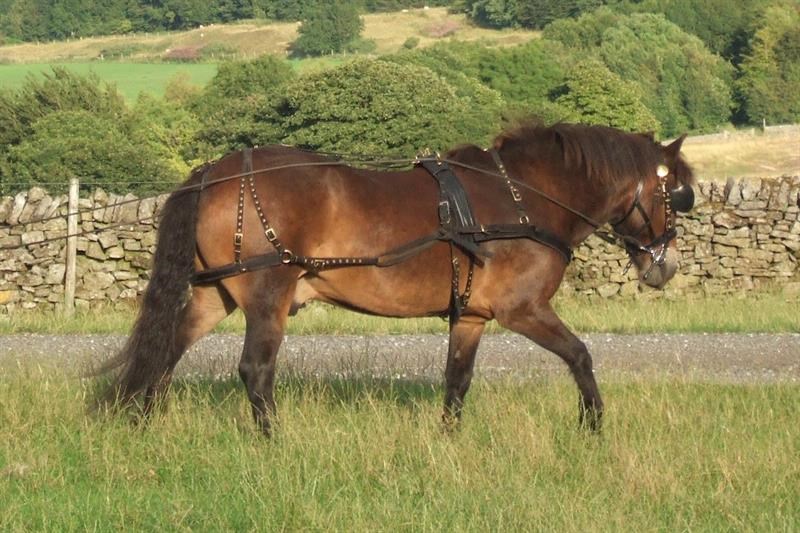In this series Susan Dunne looks at how some of Britain’s rarest and most unusual breeds are faring in carriage driving.
The Exmoor Pony – originally called the ‘horsebeast’ in old Exmoor, is Britain’s oldest breed of native pony, thought to be little different from the original wild ponies which colonised Britain over 150 000 years ago. Native to Exmoor itself and formerly used in a variety of roles in farming, this stocky, powerful pony displays incredible stamina.
The Exmoor is noted for its brown coat with mealy (panagaré) markings around the muzzle, eye, flanks and underbelly. A special characteristic is the ‘toad eye’ caused by extra fleshiness around the eyelids which provides protection from rain and snow. Like all native breeds it is well-protected by a thick woolly coat in winter and has hardy hooves. Most Exmoors measure around 12 hh and can carry adults up to 12 stone which makes them suitable for both children and small adults.
‘Endangered’ According to the Rare Breeds Trust, the Exmoor Pony is currently classed as ‘endangered’. Numbers were critically low a er the Second World War when 2 ponies were sent as exhibits to London Zoo to highlight their plight but thanks to the work of the Rare Breeds Trust and the Exmoor Pony Society there are now approximately 500 semi-feral ponies on Exmoor and approximately a further 3,500 across the UK. Having adapted to its role as a family leisure pony in the 20th century, the Exmoor has found a new lease of life both under saddle and in harness. Competing with Exmoors Paula Kay from North Yorkshire has blazed something of a trail with Exmoors, competing her mare Ariel at driving trials. Having ridden Ariel on the England Trec squad, Paula was devastated that she had to give up riding due to health reasons. Taking up driving instead, she introduced Ariel to harness aged 19 and has never looked back (“I really wish I’d come to driving sooner!”).
She describes Ariel as a “pocket rocket” whom she never has to ask to go forward – “Once she sees the cones, her ears go forward and she’s pulling to get at them.” When it came to introducing Ariel to driving, Paula had no doubts about her: “I just knew Ariel would do it!” With the help of Pat Cooper and the NEDTL (“everyone was just fantastic – they were so helpful”) they went on to compete.
Now 25, Ariel regularly competes at the NEDTL driving trials and is still going incredibly strong. Paula said: “They are an incredibly hardy breed and they cost just about nothing to keep. They have a lovely natural waterproof coat, although as ours are working we do clip them to keep them comfortable.
What I love about the breed is their quirky character and they are all so different. I would say you’ve got to earn their trust but once you’ve got it, it’s there for life. They are very loyal in their way.”
A well-known issue for riders of Exmoors is the diffi culty of fitting tack - but how about getting harness to fit? Paula says “they’re an odd shaped pony definitely! I have had to have both harnesses altered in the back, and they are very broad-headed so Ariel has a cob brow band. It’s been a case of mixing and matching and a bit of making to measure but once you’ve got it, you’ve got it! I also found that Ariel changed shape when she started driving – she actually went up a rug size”.
As well as competition driving, Ariel has done well in driven showing (“she can do nice paces in an individual driven show”) and also enjoys Arena Challenge and pleasure driving. Paula’s intention is to keep her going as long as she’s fit and enjoying it and at the same time bring on her other Exmoor, Jupiter aged 7. She describes Jupiter as more laid back and he is currently being introducing to riding and will slowly be broken to carriage work. Pleasure Driving Sarah Burnley from Derbyshire was in search of a pony which was both strong enough to carry an adult and had the ‘element of proper wildness’ that characterises the Exmoor. She has bought two Exmoors which were bred on the moorland and are half-brothers. Having ridden, the older one, Bilbo until he was 16, she broke him to drive (with a little help and a lesson from Caroline Dale-Leech) when she found livery on a farm that was suitably equipped with driving tracks. Now she drives Bilbo in a 4 wheel Bennington and has never looked back: “I feel totally safe with Bilbo. He just took to carriage driving naturally – right from the start he just leant in to the cart and started using his shoulders.”
Of Exmoors generally she says: “I’ve had three and you have to work with them but if you do what they like doing, they’re really the best ponies. They’re very versatile and adaptable. Mine live out and aren’t shod and I’d have to say they are the hardiest, healthiest ponies I’ve ever come across.”
At 20, Bilbo now has Cushing’s disease which is managed well and Sarah finds that keeping him in work through driving and riding is crucial to keeping him slim and healthy: “He’s been adopted by an 11 year old rider and driving is the second string to his bow. You can leave him out of the carriage all winter and he’ll just go straight back in to it in the summer.”
Sarah is currently long-reining her other Exmoor, Cracker aged 13 with a view to driving and gets great enjoyment from the training side - ‘I really love long-reining!” Going Multiple Gill Ellis from Worcestershire was also drawn to Exmoors s for their natural nature and strength ratio to height. With 4 ponies, Gill had ambitions to put together a team of Exmoors – in terms of height and colour they are o en a ready match – but very sadly her main pony, Patience (Bluebarn Patience) died suddenly aged 16. For Gill “Patience was the lynchpin – I felt absolutely safe with her. She was a rock who would do anything. We reached that point a er putting in hours and hours of work and long reining – it’s important to remember that Exmoors are very natural ponies and you need to negotiate with them rather than dictate.” Gill had also worked Patience in tandems and pairs with her two other ponies, Willow (Hardicott Willow Flute) and Mary (Beinnlaith Proud Mary), who both drive singly and in pairs.
As well as enjoying driving Exmoors, Gill finds it fascinating to see how they interact in a herd: “They are very, very clever, loyal to each other and very herd orientated. There’s a strong pecking order and they are very good with their youngsters. We have a seven and a half acre field and their hearing is so good they can hear me click from the opposite side of it. They’re extremely hardy, good at foraging and look a er themselves very well.”
For more information about Exmoors visit the Rare Breeds Trust website: www.rbst.org.uk. And the Exmoor Pony Society: www.exmoorponysociety.org.uk

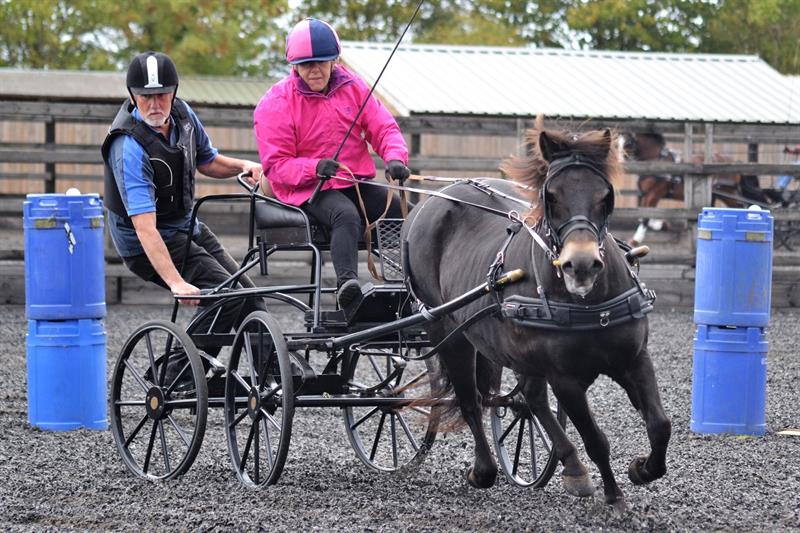
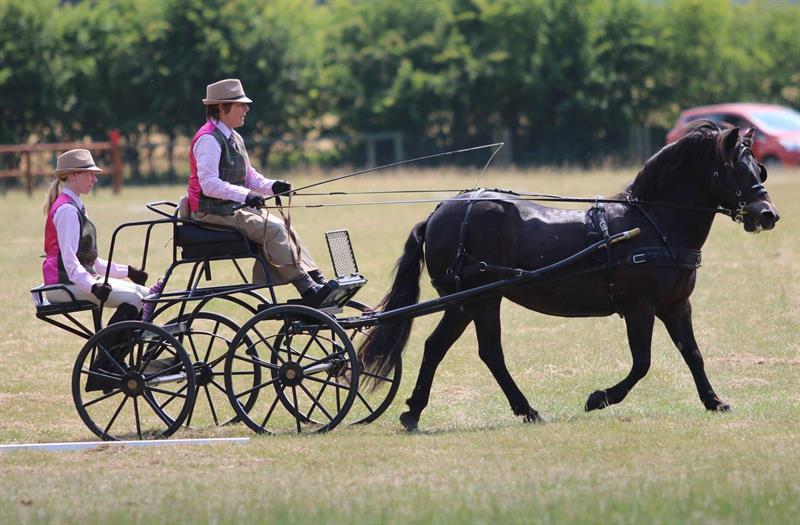
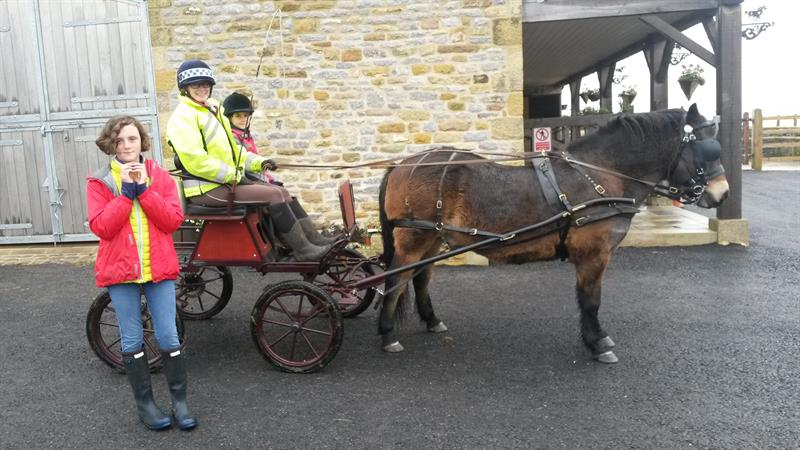
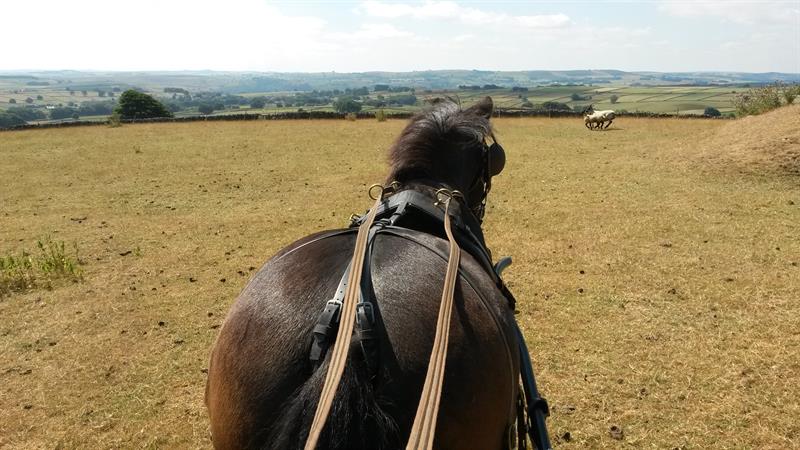
This article first appeared in the February 2019 issue. Subscribe here to keep up to date with the world of Carriage Driving
